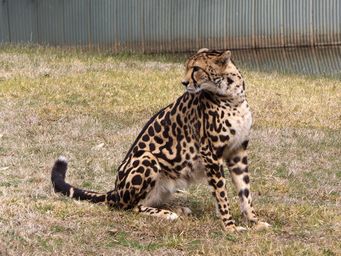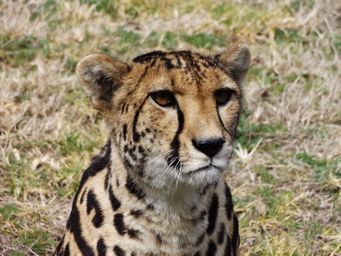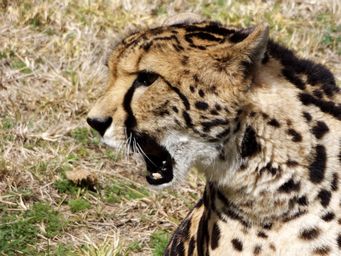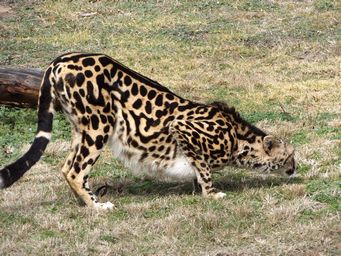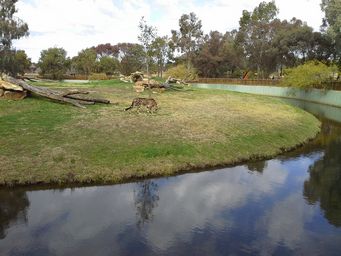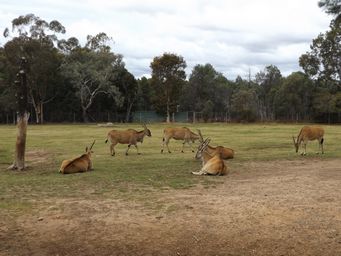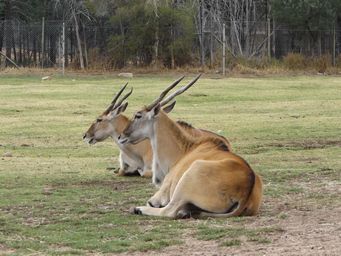Australia So Much to See
New South Wales - Taronga Western Plains Zoo Dubbo
Siamang have the closest family bonds of all gibbons. Mates pair for life, and their young stay with their parents for up to
six years. The father takes over the daily care of the infants when around eight months of age, only handing it back to the
mother to nurse and sleep.
Siamang inhabit the forest remnants of the Indonesian island of Sumatra and the Malaysian
Peninsula, being a separate sub species in each of these countries.
They are an endangered species, mainly due to loss
of habitat.
On our second visit to Taronga Western Plain Zoo at Dubbo, we saw a few different animals, and the results of their breeding programs
with a number of species with their young offspring. Set on 300 hectares, this zoo has 300 hundred staff, assisted by 100 volunteers. There were developments being undertaken including a whole new and larger area for the Lions.
These Siamangs cross a moat on ropes to reach an island where they can play during the day (above left). Siamang cannot swim and avoid water.
Siamangs can readily walk upright (at right).
Males and females have a throat pouch which can be inflated to the size of the siamang's head, allowing it to make loud, resonating calls or songs.
Sumatran Tigers have more stripes than any other tiger species. The Sumatran tiger is one of the smallest tigers. Critically
endangered, there are only around 400 Sumatran Tigers left in the wild. The Sumatran tiger persists in small and fragmented
populations across Sumatra.
On a hot day on our previous visit, this nocturnal tiger was hidden from view. On this our
second visit on a cooler day, he was stretched out fast asleep in the sunshine.
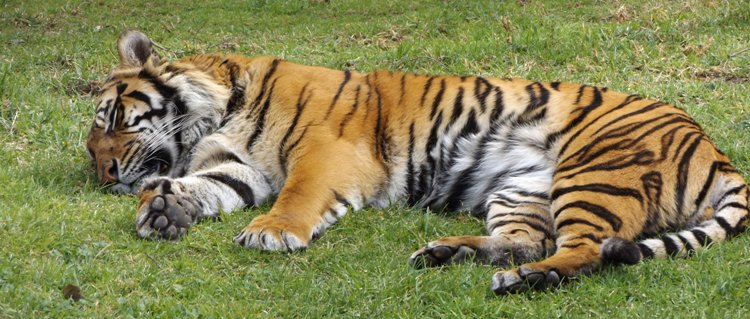
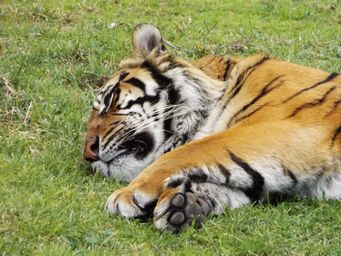
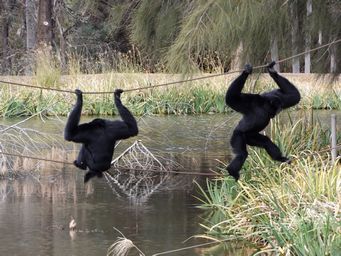
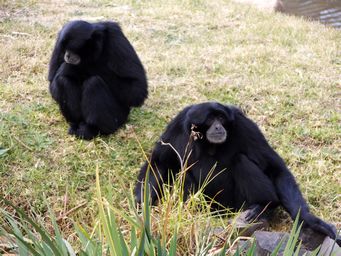
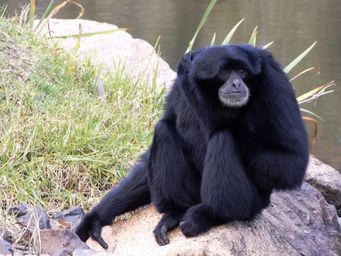
Cheetahs are built for speed. The ridges on their pads and short thick claws act like spikes on a sprinter's shoe. A long
tail balances the Cheetah through swift twists and turns. The Cheetah's big lungs, large rib cage, and wide nasal passages enable
it to get enough oxygen to fuel bursts of speed.
The cheetah is the fastest land animal. Cheetahs can hunt running
at up to 64 kilometres per hour which can be sustained over almost five kilometres, and are capable of accelerating to 112 kilometres
per hour over distances up to 100 metres, with 120 kilometres per hour being recorded. They can accelerate from stand still to 112
kilometres per hour in three seconds.
The Common Eland graze in herds of up to 500 animals and they are not territorial. They do not form strong bonds, and animals
can move between herds. Males can weigh up to one tonne, yet they can easily and gracefully jump 1.5 metres from a standing
start.
